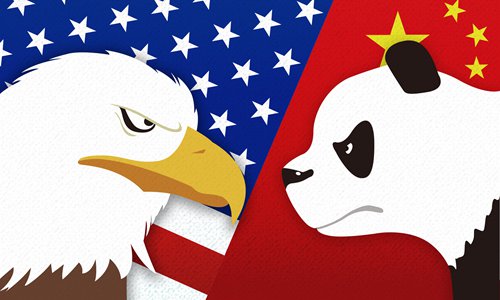
Why do new geopolitical regions emerge in the lexicon of international relations? Do they come about because of the rise of big economies in a particular region, or because certain regions become the playground of great power tussle? There is a weakening of the security and economic order spearheaded by the United States in the post-World War II, but there is prevalent uncertainty as to what the alternative is, and what is the so-called “liberal international order” transitioning into.
It is clear that the world is not bipolar, nor unipolar, but is it truly multipolar? There are new power centers, but none of these power centers are quite comparable to the United States and China. New power centers like India does not desire a power condominium (a G2) between the U.S. and China- a new great power relationship that Beijing might aspire for in the near future. At the same time, new power centers like India also does not desire any escalatory conflict between the U.S. and China that could eventually force countries to take sides.
Several countries in the Indo-Pacific, including India, would prefer the region to be multipolar wherein no one country, or two countries call all the shots. A multipolar Indo-Pacific might be preferable for many, but what is the Indo-Pacific in reality? While New Delhi principally espouses an Indo-Pacific guided not by competing strategies but by the inclusivity of interests, how are great powers in the region really wielding powers? What are the signs of competition, cooperation, contestations, and confrontation in the Indo-Pacific? Are American and Chinese behavior in the region, a recipe for more open confrontations over issues of American imperative for unfettered access vis-a-vis Chinese imperative for area denial and anti-access in the Western Pacific?
Security, in the military as well as the economic sense, remains the paramount concern for all stakeholders in the region. How new technologies are increasingly connected to the economic and security tussle between the U.S. and China adds new layers to the complexity of the Indo-Pacific. The size of the American and Chinese economies makes any conflagration between the two, as seen in the U.S.-China trade war, calls for all to calculate their own economic strategies. Because of the U.S.-China power dynamics and their clout in the international system, the balance of power in the Indo-Pacific is perhaps a reflection of this bilateral dynamics, more than anything else. The Indo-Pacific, a strategic theatre, stitching together the Indian and the Pacific Oceans, has sub-theatres, and the U.S.-China confrontation over issues of freedom of navigation in the Western Pacific would be most consequential for the global balance of power.
While powers, both big and small, pursue their national interests in a rational and strategic fashion, it will be imperative to follow their dynamic perceptions and approaches to the Chinese notion of territorial aggrandizement and intransigence amidst its economic influence. In the emerging circumstances, it will be naïve to overlook China’s ability to influence its Southeast Asian neighbors, too, if not toe the Chinese narrative, move closer to accommodate Chinese interest in the region. The economic interdependence and infrastructure development across the length and breadth of the region has an overwhelming Chinese footprint, unlike any other power, including the United States. China’s ambitious Belt and Road Initiative (BRI), more particularly its Maritime Silk Road (MSR) strategy, traverses across the Indo-Pacific geopolitical space. On the other hand, the military alliance framework, the force deployment and power projection in the region continue to be highly skewed in favor of the United States, despite China’s rapid military modernization. The multilateral arrangements in the Indo-Pacific region, whether in the economic or security realms, are primarily led by China or the United States. An arrangement like the Quadrilateral Security Initiative (Quad), despite being elevated to the ministerial level, still lack strategic chutzpah, with lingering ambiguity, among members, as to what its purpose and future is.
Who wants what out of the Indo-Pacific, and who is willing to invest what kind of economic and military material in the region, remains an evolving discourse. If China is buying time to eventually create an environment that provides greater latitude for unchallenged Chinese unilateral activism, it is in the DNA of American grand strategy to preclude the rise of any such regional hegemony that challenges American hegemony. As the U.S. and China attempt to create their own favorable balances of power in the Indo-Pacific, what are the chances of clash of two hegemonies or the co-habitation of two hegemonies? Would a multipolar Indo-Pacific crumble, even before it is fully realized? In such scenarios, what would be the traction for relatively weaker power centers, who see their interests being served better in a multipolar Indo-Pacific?
*** The author is an Assistant Professor at the Department of Geopolitics and International Relations, Manipal Academy of Higher Education (MAHE) ***
![]()

